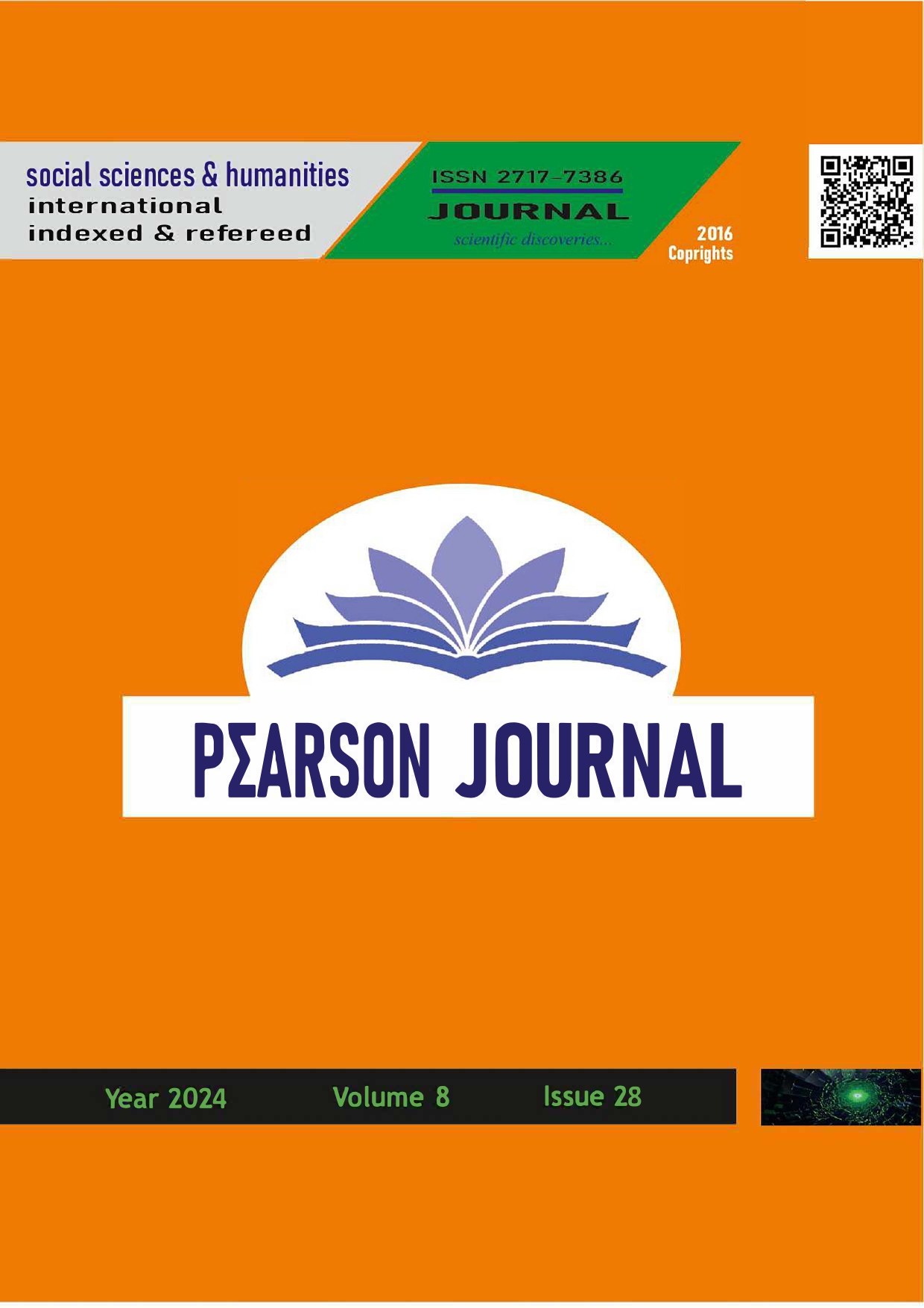Sanat Eğitimi Öğrenme Sürecinde Kullanılan Yöntemler
DOI:
https://doi.org/10.5281/zenodo.11575817Anahtar Kelimeler:
Sanat, Sanat Eğitimi, Öğrenme Süreci, Yöntem, Yardımcı Üreme TeknikleriÖzet
Bireysel yaratıcılığı geliştirmeyi ve teşvik etmeyi amaçlayan birçok araştırma ve öğretim yöntemi vardır. Çünkü bireyler esnek öğrenme fırsatlarından ve kapsayıcı çalışma alanlarına katılımdan yararlanır. Sanat eğitimi alanı, eğitimin başlangıcından itibaren eğitim süreci boyunca bireyin yaratıcı yeteneklerini geliştirmede en bilgilendirici ve etkili dal olarak kabul edilmektedir. Sanat eğitimi sayesinde bireyler yaratıcı becerilerini geliştirme ve problemlere çok yönlü bir bakış açısıyla yaklaşma becerisi kazanırlar. Bu anlamda sanat eğitimi ve sanat yoluyla öğrenme sürecinde farklı yöntem ve tekniklerin kullanılması dikkat çekmektedir. Bu doğrultuda geliştirilen yöntem ve teknikler sistemde zaten mevcut olup, süreç içerisinde eğitimciler tarafından güncellenerek kullanılabilmektedir. Bu çalışmalar öğretmen ve öğrenci kontrolünde yürütülür ve planlanırsa öğrenme süreci daha etkili olacak ve ders hedeflerine ulaşılacaktır. Programlar ve planlar, eğitimin her seviyesindeki çocukları geliştirmek ve dönüştürmek için tasarlanmıştır. Bu bağlamda, yapılandırılmış yöntem ve teknikler kullanılmaktadır. Sanat eğitimi, fiziksel gelişimlerinden bağımsız olarak çocukların yaratıcılıklarını ve becerilerini geliştirmede önemli bir rol oynar. Bir bireyin zihinsel süreçlerini soyut olarak temsil eden imgeler, bilişsel yeteneklerinde önemli bir rol oynar. Bireylerin yaratıcılıklarını ve estetik duyarlılıklarını ilk yıllarından itibaren geliştirmek, daha sonra çevrelerinin güzelliğini takdir edecek yaratıcı ve üretken insanlar olmalarına yardımcı olacaktır. Sanat eğitimi kadar önemli bir alanda bu üzerinde durulması gereken bir konudur. Sanat eğitiminin bilişsel, duyuşsal ve psikomotor alanlarla ilgilenmesi, birçok değişkenin olduğunu ve bu değişkenlerin öğrencilerle bir arada bulunabileceğini düşündürmektedir. Bu nedenle eğitim sistemlerine ve programlarına farklı yöntem ve tekniklerin tanıtılması ve bu yöntemlerin sanat eğitimi sürecinde kullanılması önem arz etmektedir. Böylece birey, sanata karşı önyargılarını aşarak, sanata ilgi duyan, eleştirilere saygıyla yaklaşabilen, karşıt görüşlere sahip etkin bir sanat tüketicisi haline gelir. Bu bağlamda çalışma, çağdaş eğitim felsefesinin argümanlarına odaklanarak sanat eğitimi öğrenme sürecinde kullanılan yöntemleri öne çıkarmayı amaçlamaktadır. Araştırma için gerekli verilerin sağlanması amacıyla ulusal ve uluslararası çalışmalardan yararlanılmış, tez, makale, toplantı ve konferanslar dijital ortama aktarılmıştır. Aranan ve elde edilen bilgiler araştırmalara dahil edilmiş ve sanat eğitimi öğrenme süreci üzerinde durulmuştur.
Anahtar Kelimeler: Sanat, Sanat Eğitimi, Öğrenme Süreci, Yöntem, Teknik.
Referanslar
Ayaydın, a. (2017). Çoklu zekâ tabanlı görsel sanatlar eğitiminde bir öğretim yöntemi olarak müze eğitimi. Milli Eğitim Dergisi, 46(214), 9-21.
Ayaydın, A. (2010). Görsel sanatlar eğitiminde ölçme ve değerlendirme süreci üzerine. Milli Eğitim Dergisi, 40(187), 240-250.
Arpalı, F.S. (2008). Türkiye’de sanat eğitimi yöntemleri. Çanakkale Onsekizmart Üniversitesi Sosyal Bilimler Enstitüsü Güzel Sanatlar Eğitimi Anabilim Dalı Resim-İş Eğitimi Bilim Dalı. Yayımlanmamış yüksek lisans tezi. Onsekizmart Üniversitesi, Çanakkale.
Artut, K. (2020). Sanat eğitimi kuramları ve yöntemleri. Anı Yayıncılık.
Akkurt, S., & Boratav, O. (2018). Neden sanat eğitimi? International Journal of Scholars in Education, 1(1), 54-60.
Akyol, A. K. (2003). Drama ve dramanın önemi. Türk Eğitim Bilimleri Dergisi, 1(2).
Aykut, A. (2006). Günümüzde görsel sanatlar eğitiminde kullanılan yöntemler. Erciyes Üniversitesi Sosyal Bilimler Enstitüsü Dergisi, 1(21), 33-42.
Atilla, U., & Bulut, Ü. (2017). Müze eğitiminin çocuğun görsel sanatlar eğitimine etkileri. Ordu Üniversitesi Sosyal Bilimler Enstitüsü Sosyal Bilimler Araştırmaları Dergisi, 7(3), 705-714.
Bilirdönmez, K., & Karabulut, N. (2016). Sanat eğitimi süreç ve kuramları. Ekev Akademi Dergisi, (65), 343-356.
Buyurgan, S., & Buyurgan, U. (2007). Sanat eğitimi ve öğretimi. Ankara: Pegem A Yayıncılık, 189-209.
Dilmaç, S., & Dilmaç, O. (2020). Görsel sanatlar dersinde yaratıcı drama yönteminin öğrencilerin eleştirel düşünme becerilerine etkisi. Yaratıcı Drama Dergisi, 15(1), 85-100.
Demirel, Ö. (2021). Öğretim ilke ve yöntemleri: Öğretme sanatı. Pegem Akademi.
Erbay, M. (1997). Sanat eğitiminin önemi.
Erbay, M. (1997). Sanat eğitimi yöntemleri üzerine tartışmalar.
Gel, Y. (1996). Sanat eğitimi ve yaratıcılık., J. Baysal, N. İpşiroğlu, Z. İpşiroğlu, Ş. Ozil (Ed.). Çağdaş Yaşamı Destekleme Yayınları – 9. İstanbul.
Genç, S. (2014). Sanat eğitiminde eğitsel oyunların önemi. Bartın University Journal of Faculty of Education, 3(1), 380-392.
Güven, S. (2018). Öğretim sürecinde öğrenci ve öğretmen. S. Güven., M.A. Özarbaş (Ed.), Öğretim ilke ve yöntemleri. (s. 34-68) içinde. Pegem Akademi.
Karasar, N. (2020). Bilimsel araştırma yöntemi. Nobel Yayıncılık.
Kurtuluş, Y. (2002). “Sanat eğitimi hareketi” ve Tonguç. Eğitim ve Bilim, 27(123).
Parsıl, Ü., & Kılıç, A.G. (2023). Çok alanlı sanat eğitimi yöntemi ve kuramsal bileşenleri. Sanatın fısıltıları. (s. 98-124) içinde. Serüven Yayınevi.
Mercin, L., & Alakuş, A. O. (2005). Sanat eleştirisi ve pedagojik eleştiri yönteminin incelenmesi. DÜ Ziya Gökalp Eğitim Fakültesi Dergisi, 5, 36-46.
Kırışoğlu, O. T. (2019). Sanatta eğitim, görmek-görmek-anlamak-yaratmak. Ütopya Yayınları.
Kılıç, A. G. (2023). Orta okul görsel sanatlar dersi öğretiminde seçilmiş bazı klasik müzik eserlerinin etkisi (a. Vivaldi dört mevsim konçertosu). Yayımlanmamış yüksek lisans tezi, İnönü Üniversitesi, Malatya.
Özarbaş, M. A. (2018). Temel öğretim yöntemleri. S. Güven., M.A. Özarbaş (Ed.), Öğretim ilke ve yöntemleri. (s. 260-305) içinde. Pegem Akademi.
San, İ. (2010). Sanat eğitimi kuramları. Ütopya Yayınları.
Sullivan, G. (1993). Sanat temelli sanat eğitimi: Anlamlı, özgün, eleştirel ve çoğulcu öğrenme. Sanat Eğitimi Çalışmaları, 35(1), 5-21.
Ünver, E. (2002). Sanat eğitimi. Nobel Yayın.
Yılmaz, M. (2007). Görsel sanatlar eğitiminde iş birlikli öğrenme. Kastamonu Eğitim Dergisi, 15(2), 747-756.
Zimmerman, E. (2009). Sanat eğitimi kuram ve pratiğinde yaratıcılığın rolünü yeniden kavramsallaştırmak. Sanat Eğitimi Çalışmaları, 50(4), 382-399.
İndir
Yayınlanmış
Nasıl Atıf Yapılır
Sayı
Bölüm
Lisans
Telif Hakkı (c) 2024 PEARSON JOURNAL

Bu çalışma Creative Commons Attribution 4.0 International License ile lisanslanmıştır.


